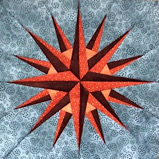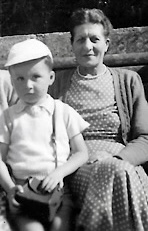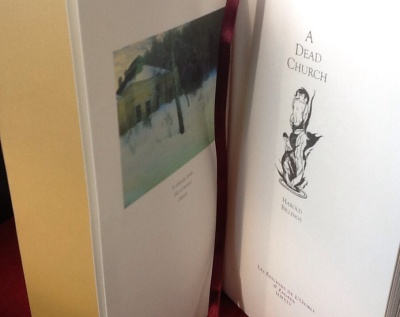Des Lewis will be 77 years old on 18 January 2025
Those who have read these episodic brainstorming reviews of mine must know they are very personal — rough-shod and spontaneous. Synchronicity and anagram mixed. I know they are not professional, never potentially publishable other than in the madness of my head, but I do hope they show grains of dark truth and cosmic panache.

These Des Lewis Gestalt Real-Time Reviews were founded in 2008.

‘What’s the loveliest word in the English language, officer? In the sound it makes in your mouth, in the shape it makes on the page? What do you think? Well now, I’ll tell you: E-L-B-O-W. Elbow.’ — THE SINGING DETECTIVE

“How shall a man find his way unless he lose it?” — Walter de la Mare

To any current genre author I have reviewed before — if you have a new story recently published or soon to be published in a collection or anthology, you may have a review by me of the story that also showcases where it is published. See HERE. (This is because I am no longer well enough to review as many books as I once did.)
Fresh Fictions, free to read HERE.
No AI input in preparation of my texts whatsoever.
THE NEW NONSCENIC
Photos here: https://conezero.wordpress.com/2024/02/24/d-f-lewis-recent-photos-1/




The Angel Headstone
“I was curious whether this old priest made a meal from any of the stream’s swimmers.”
I was curious, too, at the déjà vu with which this story smouldered. My memory is usually bad – but I cumulatively realised a different version of this story had passed my gaze before (now recognised as one I reviewed and described here as ‘Angel Head’). Not feeling perturbed or short-changed, I sensed a delicious frisson of uncanny surprise it had managed to seep back into my mind at all but, now, for reasons that will become obvious to you when you read either version, I recognised a hindsight which not even someone with an attack of severe amnesia can shake off. Indeed how could I have even dreamt of the possibility of forgetting or ever shaking off THIS story of a monstrous religio-coitus which has, today, come back to haunt me in a vaguely disfigured form. The two versions are hauntingly off kilter with each other; Susan becomes Shanon plus other changes that I simply sense but do not dare cross-check properly. Just let these two versions reside together in your mind, one upon the other, like a wickedly erotic palimpsest, I’d say. A Dead Church, too, I can now see, by dint of this luxury book, takes on an eponymous force it didn’t have before. A Dead Church where this story’s well-honed revelation of nightmare is enacted. Enacted at least twice and, I fear, again and again.
Bright-Eyes
“But physical remnants of the old cemetery — the decorative cast-iron fences left around single plots, the crenelated little monuments tipped sideways, anything standing — would represent a colourful celebration for the dead…”
It has now struck me that the titles of Harold Billings’ and my own ‘Les Editions de L’Oubli’ books both start with ‘A Dead…’ and both serendipitously seem to deal with seismic re-visionings of the authors’ own past creations. But, judging by this second part of ‘A Dead Church’, Billings is formulating a whole new extended single world of the religio-coitus of the Angel Head and the blind monk from those far days gone by. Today we have a modern, iphone-toting couple, abrim with romantic sex, investigating the same dead cemetery and church, with ‘networks’ remaining of the long departed dead in diaspora from church to church. The whole cemetery and church ambiance is powerfully conjured, within a stylish prose, as is the selfless summoning of her boyfriend’s sex for the revenant’s use but perhaps fundamentally, cruelly misunderstood…
As an aside, I do not really know why I chose earlier that chance quote above from the book’s first part about the ‘stream’, which was just a passing reference in the Billings text, as it was then. It simply spoke to me, I guess. Having now read this ‘Bright-Eyes’ part, I realise, with a definite shudder, exactly why I had been called to quote it!
And the female half of the modern couple is another Susan… bright-eyed and sexy.
Des: I cannot tell whether I lost the more lengthy response that I composed earlier, explaining that since there are three couples involved in these episodes, I needed to change the “Susan” name in the foundation story to become “Shannon” in order not to confuse individuals. How I love the “Susan” in following episodes! How exquisite are those sentences you selected. A prequel is in progress that picks up emigrants from Bavaria and throws them with black ghosts and superstitious of the sea into an unforgiving new world.
The Monk’s Wild Garden
“I squeezed her hand, and noted the various tubes attached to her. I was sure they were feeding her personal goodness to somewhere in the universe where such qualities were stored.”
Like you, I have also fallen in love with bright-eyed Susan. My feathers abristle at the thought of her. And notwithstanding the stigmata upon her face from the earlier attack.
The rhapsodic prose matches the rhapsodic eroticism of the young couple, which is even more effective when set against the corpse diaspora generated by the mythological environs of a dead church… And the owl that is not what it seems.
Fallen in love with this book, too. Its wrestling with a possible retribution upon something that, after all, is presumably acting natural unto itself.
Echoes of Jericho
“The walls were providing their own tale. The walls, the walls.”
I have often spoken of triangulation in my real-time reviews over the years. And the coordinates of a gestalt that some books at their heart generate. Here we have the optimum triangulation of ‘a dead church’ when taking into account (1) the original ‘Susan’ – ‘Shanon’ Angel Head palimpsest, (2) the middle ‘Susan’ section in two parts, and (3) this final one (other than the book’s epilogue which I still have to read) where a modern group of fun- or sex-seeking youngsters attempt to hold a Halloween party at the ominously accretive genius-loci of this book. I say ‘attempt’ because a once in a lifetime storm intervenes, with deadpan yet major repercussions… Perfectly deadpan. Unreligiously diasporal. And this part of the triangulation also has another sweet girl prevailing, Eleanor / Nell. A story with a musical ‘dying fall’, if one with a lift in its tail.
The Field of Stones: An Epilogue
A brief musical coda binding anything diasporal back towards literary Gaia, those networks of stone and plant, living and dead humanity, living and dead inhumanity – and the owl-that-is-not-what-it-seems seeking its stiffened roost…
A perfect text: a stream of living words between richly red stiffened walls and binding, jacketed from dust. A dead book, ever to be re-woken by each new reader into whose hands it happens to rest for a nonce.
An author always appreciates a reviewer who is able to read deeply enough in the text to evaluate the plot, the style, and all the other things that constitute the finality of what is finally here, or there, — between an appreciation of the structure of the book, its design, the binding, the production. Des does a remarkable job in his Gestalt approach to “feel” each part of a book as he reads it, and to provide evaluation and reaction, without giving away the answers to questions that a reader must encounter as he or she reads through what is hoped to be a flowing text until it concludes. The great oak wept.
Perhaps the publication of the prequel to this book will bring both the story’s birth in the past to its conclusion in a present. While loving Susan.
A book that I sense will haunt me forever. My purchased copy is numbered 56/86.
https://dflewisreviews.wordpress.com/complete-list-of-zagava-ex-occidente-press-books/ for my complete list of Zagava – Ex Occidente Press books.
Any of my WordPress sites marked as private can be reached by other WordPress users by inserting their normal details then clicking ‘request access’.
Sequel to above book reviewed: https://dflewisreviews.wordpress.com/2014/10/27/the-monks-bible/